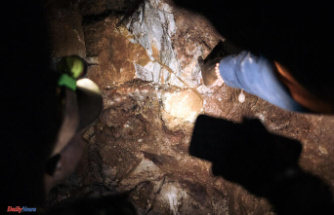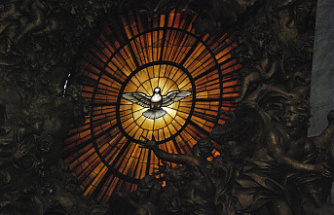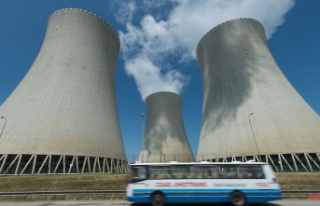Stuttgart researchers continue to tinker with the house of the future, piece by piece. After coming up with new ideas for stable construction, they turned their attention to the question of how the facades can be used in rain and heat. It should be another model with exemplary character.
Stuttgart (dpa / lsw) - Heavy rain floods the streets from time to time, but in summer the cities increasingly overheat with the rising temperatures. Researchers from Stuttgart have implemented an idea of how buildings can be built in such a way that both the streets can be protected from the water masses and the houses can be protected from the heat. In Stuttgart, they are testing a so-called hydroactive facade made of textile elements on the model of a residential tower made of steel and wood, which is intended to cool not only the outer walls and the interior of the building, but also the city. The facade absorbs rainwater and releases it again on hot days through evaporation to cool it.
The core of the idea is two textile layers that are kept apart by threads and are therefore well ventilated. The air circulation means that the water that penetrates through the permeable textile cover evaporates more quickly. This protects against insects and leaves at the same time. A film on the inside drains the water into another system. It is either stored in a reservoir or used directly in the building and can reduce water consumption. On hot days, water is fed back into the façade element, where it evaporates and cools.
The facade system is not only "incredibly beautiful", but also a "milestone for adapting the built environment to the acute challenges of our time," said Christina Eisenbarth from the Institute for Lightweight Structures and Conceptual Design (ILEK) at the University of Stuttgart when presenting the project . The first test results are promising, the temperature has dropped by about ten degrees due to the effect. "The first measurements on the high-rise at the beginning of September indicate a significantly higher cooling potential," said Eisenbarth. According to the institute, the lightweight elements can be attached to new buildings and also subsequently to houses that have already been built.
Sensors and hydraulics were used to investigate how vibrations in strong winds, for example, can be compensated for on the building on the university campus in Vaihingen. In the coming years, other different materials will be tested in and on the construction.
According to the Baden-Württemberg Chamber of Architects, the University of Stuttgart has one of the largest research clusters in Europe in the field of research into resource-saving construction. The building for the tests is the result of the Collaborative Research Center 1244 with the title "Adaptive Shells and Structures for the Built Environment of Tomorrow". According to the university, 14 institutes at the University of Stuttgart have been investigating the question of "how more living space can be created with less material in the future in view of a growing world population and shrinking resources". User comfort and socio-cultural aspects are also taken into account.
By no means the only project in Stuttgart that is trying to protect the city against the heat: a new building in the city center with a green façade is intended to contribute to a better urban climate. Around 11,000 plants were attached to the facade of a new office and commercial building. Controlled by digital sensors, the plants receive water and nutrients all year round. In summer, the green shell is supposed to provide cool temperatures and shade, in winter for insulation. Another purpose of the expensive plant coat: carbon dioxide and fine dust are bound, noise is reduced and rainwater is stored.












